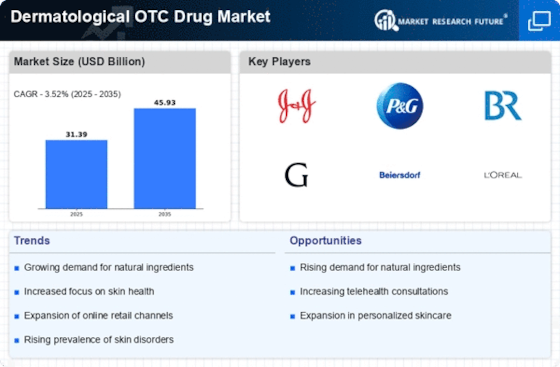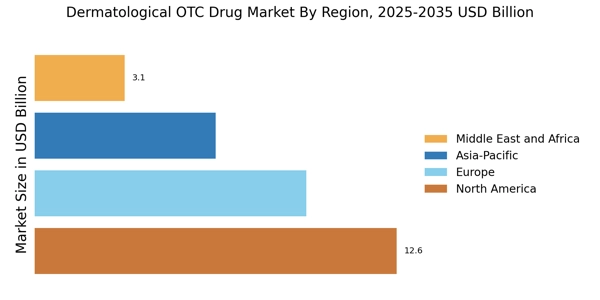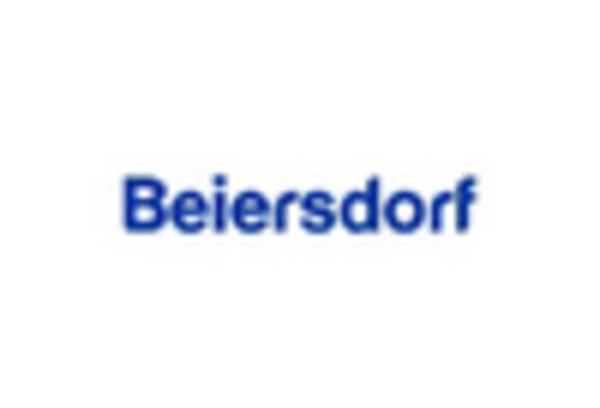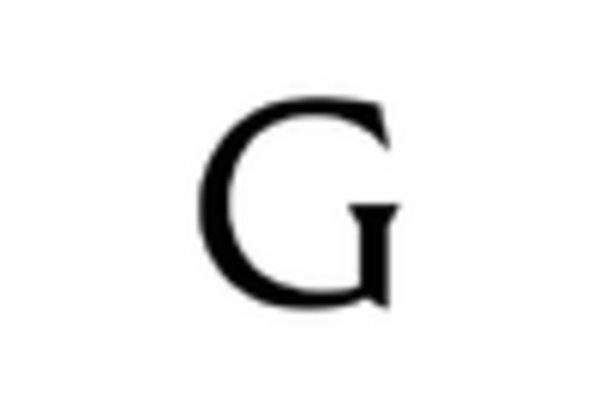Growing Awareness of Skin Health
There is a notable increase in consumer awareness regarding skin health, which serves as a significant driver for the Dermatological OTC Drug Market. Educational campaigns and the proliferation of information through digital platforms have empowered consumers to take proactive measures in managing their skin conditions. This heightened awareness has led to a surge in demand for OTC products that address specific skin issues, such as anti-aging, hydration, and sun protection. Market data indicates that the demand for sunscreen products has risen by over 20% in recent years, reflecting this trend. As consumers become more informed about the importance of skin care, the Dermatological OTC Drug Market is poised for continued expansion.
Regulatory Support for OTC Products
Regulatory frameworks that support the development and marketing of OTC dermatological products are playing a crucial role in shaping the Dermatological OTC Drug Market. Many regions have streamlined approval processes for OTC medications, allowing for quicker access to innovative treatments. This regulatory support not only encourages manufacturers to invest in research and development but also enhances consumer confidence in the safety and efficacy of these products. As a result, the market is witnessing an influx of new entrants and a diversification of product offerings. The favorable regulatory environment is likely to sustain growth in the Dermatological OTC Drug Market, as companies capitalize on the opportunity to meet evolving consumer needs.
Increasing Incidence of Skin Disorders
The rising prevalence of skin disorders such as eczema, psoriasis, and acne is a primary driver of the Dermatological OTC Drug Market. According to recent estimates, approximately 30% of the population experiences some form of skin condition, leading to a heightened demand for effective over-the-counter treatments. This trend is particularly pronounced among younger demographics, who are increasingly seeking solutions for acne and related issues. As awareness of skin health continues to grow, consumers are more inclined to explore OTC options, thereby propelling market growth. The Dermatological OTC Drug Market is likely to benefit from this increasing incidence, as manufacturers respond with innovative products tailored to specific skin concerns.
Advancements in Dermatological Research
Ongoing advancements in dermatological research are significantly influencing the Dermatological OTC Drug Market. Innovations in formulation technology and active ingredients have led to the development of more effective and targeted treatments. For instance, the introduction of new compounds that enhance skin penetration and efficacy has expanded the range of available OTC products. Furthermore, research into the microbiome's role in skin health is paving the way for novel probiotic-based treatments. As these advancements continue to emerge, they are expected to attract a broader consumer base, thereby stimulating growth within the Dermatological OTC Drug Market. The integration of scientific findings into product development is likely to enhance consumer trust and drive sales.
Rise of Telemedicine and Online Consultations
The rise of telemedicine and online consultations is transforming the way consumers access dermatological care, thereby impacting the Dermatological OTC Drug Market. With the convenience of virtual consultations, patients can receive professional advice on skin conditions without the need for in-person visits. This trend has led to an increase in the recommendation of OTC products by healthcare professionals, further driving sales. Market analysis suggests that the telehealth sector is expected to grow significantly, with dermatology being one of the most sought-after specialties. As more consumers turn to online platforms for skin care solutions, the Dermatological OTC Drug Market is likely to experience a corresponding increase in demand for accessible and effective OTC treatments.


















Leave a Comment